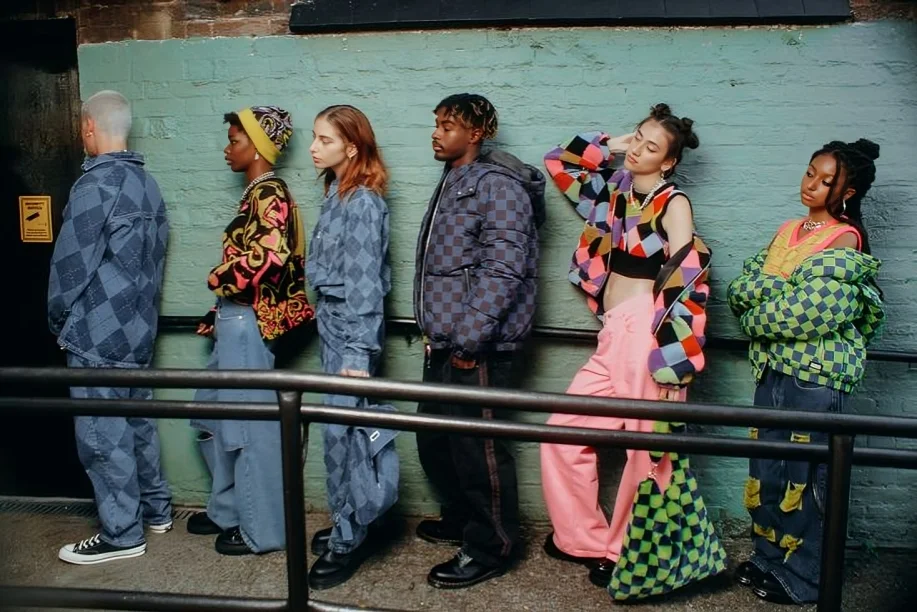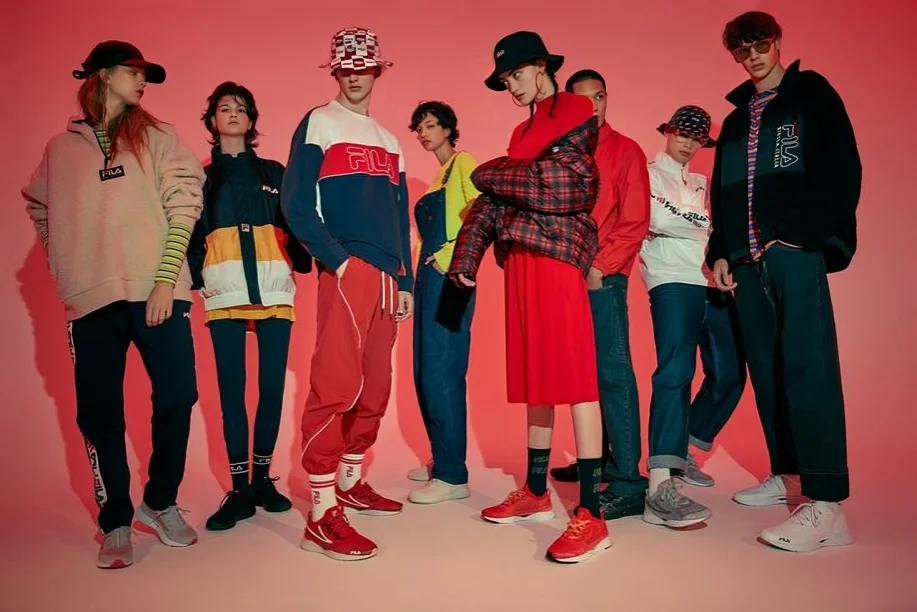In today’s digital era, Gen Alpha vs Gen Z fashion has emerged as one of the most fascinating cultural comparisons. Both generations are redefining how we perceive clothing, identity, and creativity. Yet, while Gen Z sparked a fashion revolution rooted in sustainability, individuality, and activism, Gen Alpha is growing up in an even more immersive, technology-driven world.
This article explores their key fashion preferences, cultural influences, and how both generations are reshaping the fashion industry’s future from thrifting to the metaverse.
Understanding the Generational Divide

Before exploring their fashion choices, it’s crucial to understand who these generations are.
Generation Z (1997–2012) came of age during the social media boom. They witnessed the evolution of Instagram influencers, the rise of TikTok, and the global shift toward conscious consumerism. As digital natives, they embrace diversity, gender fluidity, and sustainability as core fashion values.
Generation Alpha (2013–present), meanwhile, is the first generation to grow up surrounded entirely by artificial intelligence, virtual influencers, and immersive technologies. Their understanding of fashion is both digital and physical, seamlessly blending virtual avatars with real-world aesthetics.
This generational difference shapes how each group engages with brands, style, and self-expression.
How Gen Z Revolutionized Modern Fashion
Gen Z didn’t simply follow fashion trends they reinvented the rulebook. Through TikTok, YouTube, and Pinterest, microtrends like Y2K aesthetics, cottagecore, streetwear, and dark academia spread globally in weeks.
Their influence lies not just in aesthetics but in values. Gen Z prioritizes sustainability, demanding transparency from brands. They prefer ethical sourcing, slow fashion, and secondhand shopping. Platforms like Depop and Poshmark became mainstream thanks to this generation’s love for vintage and thrift culture.
Moreover, fashion for Gen Z is a medium of expression and protest. From challenging beauty norms to promoting gender-fluid clothing, they use fashion as a language of empowerment.
Their style philosophy is simple: “Wear what represents who you are.”
Therefore, Gen Z fashion isn’t just about what’s trendy it’s about purpose, inclusivity, and identity.
Gen Alpha: The Next Wave of Fashion Innovators

As Gen Alpha steps into the spotlight, their approach to fashion looks radically different. Growing up with smart devices, digital creators, and AI filters, they view clothing as both wearable and programmable.
Their icons are not just pop stars or models they’re virtual influencers, AI-generated fashion avatars, and YouTube creators. Brands are already tapping into this shift: Nike, Gucci, and Balenciaga have released digital collections in games like Fortnite and Roblox to reach this emerging audience.
Furthermore, Gen Alpha’s aesthetic is comfort-first and tech-integrated. With hybrid learning and gaming dominating their lifestyles, they favor athleisure, oversized silhouettes, and futuristic fabrics.
Their fashion is adaptive and expressive a blend of minimalism, technology, and creativity. They see no boundary between real-world fashion and its digital twin.
Technology as the New Fabric of Fashion
One of the most significant differences in Gen Alpha vs Gen Z fashion lies in their relationship with technology.
Gen Z learned to integrate technology into their self-expression. They use platforms to influence trends, showcase hauls, and create communities. Apps like TikTok and Instagram became their personal runways.
Meanwhile, Gen Alpha was born into a world powered by AI and AR. They experience fashion through augmented reality filters, digital fitting rooms, and the metaverse. For them, clothing extends beyond fabric it’s a tool for identity creation in both digital and physical spaces.
Fashion brands are quickly adapting. Companies like Tommy Hilfiger and Prada are experimenting with AI-driven personalization, while Gucci’s Virtual 25 sneakers can be “worn” exclusively online.
This evolution shows how technology is not just enhancing fashion it’s becoming fashion itself.
Sustainability and Conscious Consumption
Sustainability remains a cornerstone for both generations but manifests differently.
For Gen Z, sustainability is an ethical stance. They demand accountability from corporations and push for eco-friendly fabrics, fair trade, and circular fashion. Their shopping choices often reflect a moral consciousness, supporting brands that align with their environmental values.
Gen Alpha, however, sees sustainability as non-negotiable. Raised during a global climate awakening, they expect brands to be inherently sustainable. Many are already exposed to topics like carbon footprints, recycling, and regenerative materials through early education and social media.
They are likely to drive demand for biodegradable materials, digital-only fashion, and AI-optimized production systems that minimize waste.
Thus, while Gen Z introduced sustainability as a social cause, Gen Alpha will normalize it as a standard fashion practice.
The Power of Social Media and Virtual Influence

Both generations are products of the digital revolution, but their preferred platforms vary significantly.
Gen Z thrives on TikTok, Instagram, and Pinterest, where trends like “clean girl aesthetic” or “grunge revival” can go viral overnight. They follow influencers and use short-form videos to define what’s “in.”
In contrast, Gen Alpha’s social media world is immersive and gamified. Platforms like Roblox, Fortnite, and YouTube Shorts are their creative playgrounds. Here, digital clothing and virtual identities carry as much social value as physical outfits.
This shift means that future fashion influencers may not even exist in the physical world they could be AI avatars or metaverse personalities shaping digital trends.
Consequently, the fashion industry must evolve to meet this new generation’s virtual-first mindset.
Fashion as a Tool of Self-Expression
For both generations, fashion has transcended aesthetics it’s a form of storytelling.
Gen Z uses clothing to express identity, mental health awareness, and social activism. Whether through slogans, recycled fabrics, or DIY designs, they make fashion political and personal.
Gen Alpha, on the other hand, extends this expression into digital realms. Their avatars, gaming skins, and AR outfits reflect their creativity. They don’t just wear fashion — they interact with it.
Therefore, in the Gen Alpha vs Gen Z fashion debate, one thing is certain: self-expression remains the unifying thread, even if the medium differs.
Future of Fashion: The Phygital Era
The fashion industry is entering a phygital era where physical and digital fashion coexist.
Future trends include AI-designed clothing, AR try-on tools, and virtual wardrobes linked to NFTs. Both Gen Z and Gen Alpha are driving this transformation, demanding personalization, ethics, and experience-driven fashion.
Brands that succeed will merge storytelling, sustainability, and tech innovation to create meaningful fashion ecosystems both online and offline.
Key Differences Between Gen Alpha and Gen Z Fashion

When comparing Gen Alpha vs Gen Z fashion, several core differences reveal how each generation approaches style, technology, and consumption.
To begin with, Gen Z actively adopts digital tools to express their individuality and promote causes they care about, while Gen Alpha is born digital-first, meaning technology isn’t just a tool it’s part of their lifestyle.
In terms of style drivers, Gen Z is largely influenced by social media trends, thrift culture, and sustainability movements, whereas Gen Alpha’s fashion inspiration comes from gaming worlds, artificial intelligence, and augmented reality experiences.
When it comes to influencers, Gen Z still follows real people, celebrities, and online creators, but Gen Alpha looks up to virtual influencers, digital avatars, and AI-generated fashion icons, blending entertainment and innovation effortlessly.
In self-expression, Gen Z often uses fashion to communicate identity, activism, and authenticity, while Gen Alpha embraces digital identity and creativity, seeing fashion as a customizable experience that extends beyond the physical world.
The approach to sustainability also differs. For Gen Z, it’s an ethical movement a conscious effort to shop responsibly and reduce waste. For Gen Alpha, sustainability is a built-in expectation; they assume brands will naturally be eco-friendly, transparent, and tech-enabled.
Finally, their shopping habits highlight this evolution perfectly. Gen Z loves thrifting, resale apps, and vintage fashion, while Gen Alpha gravitates toward digital fashion, AI personalization, and virtual customization, reflecting how consumption itself is becoming increasingly hybrid and tech-driven.
FAQs
What defines Gen Z fashion?
Gen Z fashion is defined by authenticity, creativity, and sustainability. It embraces thrift culture, inclusivity, and bold individuality.
How is Gen Alpha’s fashion different?
Gen Alpha fashion is more digital, futuristic, and tech-driven. It merges AR, AI, and gaming culture with real-world fashion aesthetics.
Which generation is more sustainable?
Gen Z made sustainability popular, but Gen Alpha will normalize it — expecting eco-friendly innovation as the industry standard.
Will digital fashion replace real clothing?
Not completely, but digital fashion will complement physical clothing, creating hybrid wardrobes that exist across virtual and physical spaces.
Conclusion
In the evolving debate of Gen Alpha vs Gen Z fashion, one truth stands out: both generations are powerful catalysts for change.
Gen Z taught fashion to be purposeful, inclusive, and value-driven, while Gen Alpha is redefining it through technology, creativity, and innovation.
Together, they’re shaping a future where fashion is sustainable, digital, and deeply expressive proving that the next era of style is not about following trends, but creating them.

